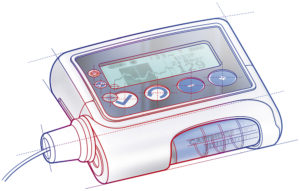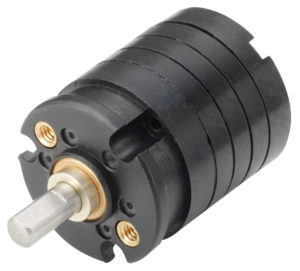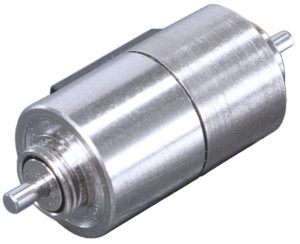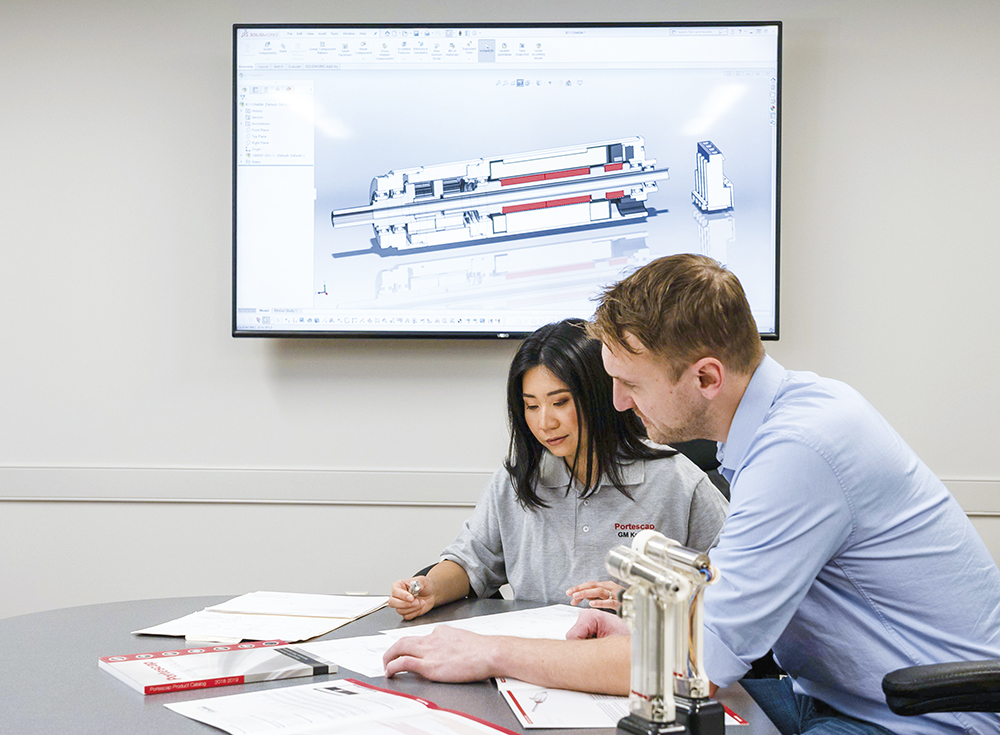To Issue 164
Citation: Beckstoffer D, “The Specific Approach: The Advantage of Customisation for Wearable Delivery Systems”. ONdrugDelivery, Issue 164 (Sep 2024), pp 10–13.
Dave Beckstoffer considers how involving customisation from the outset of an on-body injector development project can not only optimise the patient outcome but also streamline the development timescale for device engineers, with a particular focus on the drive system.

Figure 1: The capability of the delivery system must be customised to suit the drug and its delivery criteria.
In the arena of on-body injector and autoinjector development, more and more companies are creating devices that are paired one-to-one with a specific drug. While injector developers are still producing devices that can handle a range of different drugs, the advantage of developing a specific injector is in matching the unique therapy and patient profile to the given drug (Figure 1).
The demand from the pharmaceutical industry is for optimised drug delivery that is able to deliver improved drug efficacy. The expertise and timescales needed to create the latest, most effective drug treatments require high investment. In turn, optimising therapy efficacy demands the most appropriate delivery methodology.
As a result, the capability of the delivery system, based on an electric motor, a gear, a connecting actuator and, potentially, a feedback device, must also be customised to suit the drug and its delivery needs. Drugs that do not, relatively speaking, have the greatest need for volumetric precision, such as a diuretic like furosemide, could still be delivered by a generic device.
However, in the burgeoning market of biologics, precise delivery is often crucial to treatment efficacy and there might be less margin for error with respect to harmful overdosing. In these cases, customising the delivery system ensures precision over delivery force, dependent on drug viscosity and the injection time profile. Additionally, the frequency of administration and the total required lifespan of injector use are other key considerations.
“While the growth in the biologics market has pushed the move towards customising delivery system designs specifically for individual drugs, the tendency to aim to standardise devices for subsequent or similar drug types can still remain.”
While the growth in the biologics market has pushed the move towards customising delivery system designs specifically for individual drugs, the tendency to aim to standardise devices for subsequent or similar drug types can still remain. A device developer might invest resources in establishing a customised delivery system for the first contracted drug or set of biologics but might then aim to use the original design as a platform across a broader range of drugs. In such cases, the outer portion of the device and the software can be tailored to each specific drug and therapy while the core delivery system remains the same.
Typically, this could mean adjusting the force to suit the viscosity, substituting the original motor and gear specification with an off-the-shelf selection of standard products. There is a logic to this approach, where repeating tried and tested designs, only making the necessary adjustments, can quickly achieve reliable results.
The danger, however, is moving too quickly with the redesign and neglecting important decisions that can impact wider aspects of the on-body injection device. This can result in the need for reworking later down the line, extending the overall project timescale.
“The gearing system has the biggest impact on form factor and, if greater force is needed, customisation can achieve more specific ratios than off-the-shelf designs will usually provide.”
FORM FACTOR AND DRUG DELIVERY REQUIREMENTS
Form factor is an important aspect that can be adversely impacted by abandoning the full range of customisation considerations at a premature stage or by moving directly to selection of off-the-shelf motors, gears and lead screws. By maintaining a customisation approach at the concept phase of every new project, a designer can make fine adjustments to the delivery system’s components; this enables them to adapt to different drug viscosities and delivery requirements as necessary, while also keeping the form factor and weight practically the same.

Figure 2: A spur gear type is typically preferred for a wearable injector.
The gearing system has the biggest impact on form factor and, if greater force is needed, customisation can achieve more specific ratios than off-the-shelf designs will usually provide. For the most compact footprint, the gear housing can also be modified to fit perfectly within the device architecture. A spur gear is typically preferred, as this arrangement allows an offset lead screw output, enabling an improved fit within the typical rectangular layout of an on-body injection device (Figure 2).
With the gear design optimised, the motor can also be customised to provide the required output characteristics while maintaining the desired footprint. While motor size might have to increase to meet output torque requirements, using alternative motor technologies could be advantageous should increasing the gear ratio alone not be sufficient. Switching from a brushed direct current (DC) motor to a brushless DC (BLDC) motor increases the speed potential, increasing the delivery capability while reducing the footprint for the equivalent output. Changing the motor technology can also be useful for handling different drug delivery profiles. For example, if the drug needs to be delivered rapidly, the higher speed of a BLDC design could be more appropriate.

Figure 3: High-speed stepper motors are an alternative option alongside BLDC and brushed motors.
“In combination with the appropriate motor technology, a higher pitch could deliver several times the force capability from the same drive mechanism footprint.”
To achieve precise dosing and enable exact management of the delivery phase, the encoder pairing is also crucial, with careful consideration required for the feedback technology type and its resolution. Alternative technology could also be used in cases where the drug needs a delivery profile with fine, incremental volumes that are administered over a longer duration. In these cases, stepper motor technology might be preferable, which can be run open-loop, thereby focusing the feedback on the drug delivery (Figure 3).
Consideration must also be made for the lead screw, with customisation options available for the diameter and pitch leading to an optimised system. This way, in combination with the appropriate motor technology, a higher pitch could deliver several times the force capability from the same drive mechanism footprint.
However, it is crucial to remember that changes to any one of the components can impact the output or footprint of the delivery system as a whole. This reiterates the point that any design changes should be considered, with due expertise, as early as possible in the design and development process (Figure 4).

Figure 4: Device developers can gain significant benefit from early input from delivery system engineers.
DUTY CYCLES, EFFICIENCY AND RELIABILITY
From the patient perspective, energy efficiency is also crucial, and this is another area where involving motor engineering expertise can offer an advantage. Although each drug has a specific therapy profile, the motor’s operation can be adjusted to match its optimal operation.
This is key because the duty cycle has a significant impact on motor efficiency, where high-speed operation for a short duration is generally more efficient than continuous low-speed operation. Take a drug delivery profile of six hours as an example – a motor could run for two seconds every minute at high speed and still achieve the same effective delivery profile as a continuous low-speed operation. This approach demands high precision in motor control but will result in a marked efficiency increase.
“Paying close attention to duty cycle management in delivery system design can also improve another key area: lifespan.”
Paying close attention to duty cycle management in delivery system design can also improve another key area: lifespan. If a device designer assumes continuous duty operation, this could be a difference of hundreds of hours, or even several thousand hours, down to just tens of hours of intermittent operation, spread over the required months or years of use. Considering materials selection, this means that specifying the most durable, and most expensive, options may not be necessary and sufficiently robust, yet significantly less expensive, materials could be used.
The other key advantage of using intermittent duty cycles to minimise the total required lifetime is the benefit to testing. Typically, a delivery system is tested for two cycles of its total lifespan – with a lifetime reduced from hundreds to tens of hours, the life testing duration can be significantly reduced. This time advantage can be used to test an additional range of parameters, as well as allowing testing to fail, enabling a more comprehensive test procedure that can result in a more reliable device long term.
FUTURE NEEDS IN ON-BODY DELIVERY SYSTEM DESIGN
Optimising sustainability is another design aspect where customisation is looking to push boundaries. Specifically, there’s an increasing drive to convert disposable devices to reusable designs. Coinciding with the boom in weight loss drugs and GLP-1 receptor agonists, there’s significant waste with single-use syringes.
While improving the recyclability of materials is one option, there is also potential to look more closely at the balance of the drive mechanism profile with the therapy profile, with the goal of increasing the lifespan that can be achieved for delivery devices. As a result, delivery system developers are creating cost-effective ways of converting disposable devices to reusable options, capable of delivering therapies for several years.
CONCLUSION
Whether developing a wearable drug delivery device to meet new trends, such as sustainability, or adapting an existing design to deliver a new drug, the role of the motor, gear, actuator and feedback system will be fundamental. Considering the significance of these components, it is important to ensure that all design considerations are covered as early as possible in the development cycle, starting from the concept phase. In so doing, the involvement of device customisation for each project can help to ensure that the optimal patient outcome can be realised, while development timescales can be minimised by reducing the potential for surprises to emerge during the later stages of a project.

